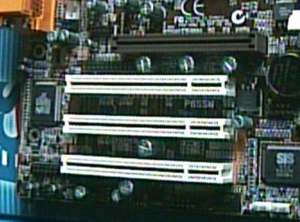ECS K7VZM KT133 Motherboard

So what does the K7VZM have in offer? Taking a look back at the specs, the board offers 2 PCI slots, 1AGP slot, and 1 AMR slot. The board does not offer any ISA slots; so make sure you keep a note of this in the event you decide to actually buy the board. Furthermore two 168-pin DIMM sockets are available, which can support up to 1GB of PC 100 or PC 133 SDRAM. I have currently installed 128MB of PC 133 High Performance Mushkin Ram on the system and it’s working fine with no hickups. One fact worth mentioning is that the VIA chipset is capable of running at the installed memory frequency irrespective of the FSB the board is using. So if you’re using PC133 RAM and the FSB is set at 100MHz the memory will still work at 133MHz.
The K7VZM is installed with the VT8363 North Bridge and VT82C686A South bridge chipset, which also has built-in 3D sound that features the AC 97 audio codec.
| NorthBridge |
SouthBridge |
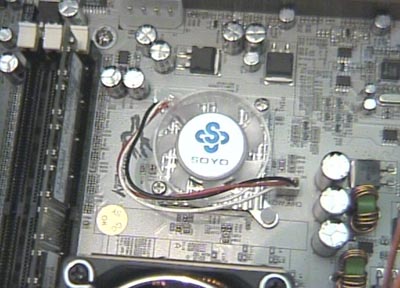 |
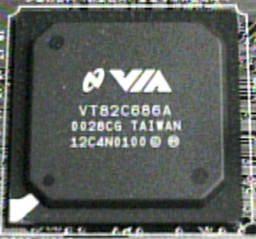 |
The overall outlook of the board looks very promising. It was in the early days when Micro-ATX boards were crippled by great functionality. Times have changed definitely for the betterment of the end user. The only hindrance the K7VZM posses in my opinion is the limited expansion options and good overclockability. (Well this is a drawback of most Micro-ATX boards) Anyway without keeping you to imagine what these features are, here are a few-
- 4 USB ports (2 located on the back panel, 2 ports located on the board itself)
- RX/TX connectors for infrared communication
- Wake on LAN and Wake on Modem Ring
- Power Failure Recovery
- Suspend to RAM
ECS has done a great job in placing the physical components of the board. If you take a closer look you’ll notice the distance between the CPU socket and the motherboard chipset.
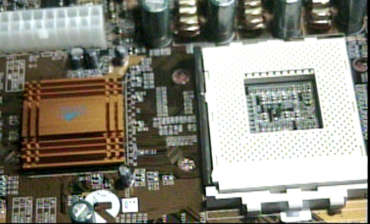
This allows us to place a large heatsink without any difficulty at all. Also the placement of 12 2200MFD capacitors around the CPU socket is more than adequate for good power supply filtration, thus giving more stability to the system.

The K7VZM includes two PCI IDE interfaces, which supports four IDE devices (PIO mode 4, DMA Mode 2, Ultra DMA 33/66). Sadly the board doesn’t support UDMA/100, which would have given more performance to the user.
Built in sound
The ECS K7VZM has a built-in Avance Logic ALC100 to handle all your audio needs controlled by an AC97 controller. The built in audio controller by no means will replace a SB Live! However since the K7VZM is ultimately intended for users with minimum requirements, so I suggest you use the built in sound and save the extra PCI slot for some other device. The choice is up to you, yet if you don’t have any real audio requirements go with this. It isn’t that bad at all really.
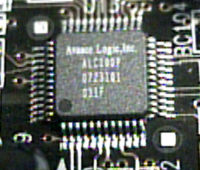
4X AGP
The K7VZM includes a 4X AGP slot, which in fact provides four times the bandwidth of the original AGP specification. The 4X AGP slot is supposed to deliver high-level performance to your video requirements, however personally I really don’t see any noticeable difference between 2X and 4X. If anybody does, hey good for you.
